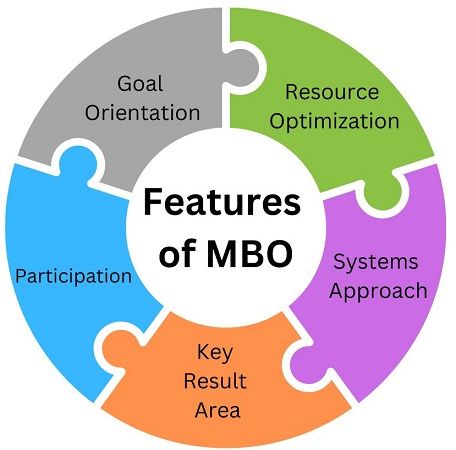 MBO and MBE are the two models of management. The aim of these two models is to help the management focus on the attainable and ultimate goal, as well as to channelise their efforts into the achievement of the best possible results with the help of available resources at that point in time.
MBO and MBE are the two models of management. The aim of these two models is to help the management focus on the attainable and ultimate goal, as well as to channelise their efforts into the achievement of the best possible results with the help of available resources at that point in time.
MBO is an acronym for Management by Objectives. MBO is a system of management wherein each member takes part in the organization effectively. Conversely, MBE is a short form for Management by Exception. MBE is a model of strategic management wherein the managers can focus only on exceptionally important matters and take important decisions.
In this post, we will discuss the differences between MBO and MBE.
Content: MBO Vs MBE
Comparison Chart
| Basis for Comparison | MBO | MBE |
|---|---|---|
| Meaning | MBO is the strategic management tool used to improve the organization's performance by defining the objectives which both management and employees agree upon together. | MBE is the system of identifying and reporting any issue to the management only when a managerial level of experience is required for resolving it. |
| Objectives | To measure and judge performance and to relate individual performance to organizational goals. | To free up the time of the management, so that they can focus on the most important issues first. |
| Nature | Philosophy of Decentralization | Control Technique |
| Participation of employees | High | Comparatively low |
| Responsibility Ambiguity | There is no responsibility ambiguity because it is assigned clearly. | Responsibility ambiguity is present. |
| Functions | Helps in setting goals | Reports exceptions to the top executives. |
What is Management By Objectives (MBO)?
Management by Objectives (MBO) is a management approach to improve the firm’s performance. They do so by clearly setting the objectives. The company’s management sets these objectives after consulting with the employees first. It relies on the assumption that when employees have a say in goal setting and action plans, the participation and commitment of employees increases.
Do you know?
The concept of Management by Objectives (MBO), was first proposed by Peter Drucker. But it is George Odiorne, who developed this concept.
MBO states top company goals and uses the same to identify employees’ objectives. For this purpose, the organizational goals are set and communicated to the employees by the members of the concern, with an aim of achieving the objectives.
The aim is to provide direction to the employees. This makes them fully aware of the fact about what they are expected to do at the workplace. It also determines the roles and responsibilities of the employees. Besides, it also ascertains the future course of action.
It requires the various levels of management to agree on clearly defined objectives.
It tends to improve an organization’s performance by keeping the goals and subordinate objectives in tandem.
Alternatively, we call MBO as results management or management by results.
In this process, the company’s management and employees jointly determine the common objectives, define responsibilities and use them as a criterion to meet the company’s goals and targets.
Features of MBO
- Goal Orientation: MBO lays emphasis on deciding the individual goals in harmony with the goals of the organization. The goals tend to state the responsibilities of various parts of the organization. Also, it helps to join the organization with its parts and environment as well.
- Participation: MBO is a process that requires a high level of participation of the concerned employees in the establishment of goals and appraisal of performance. So, the employees get that opportunity to influence decisions and understand job relationships.
- Key Result Area: MBO aims at improving performance in the areas which are of utmost importance by identifying Key Result Areas (KRAs).
- Systems Approach: MBO works on a systems approach to manage a firm. It seeks to integrate the individual with the firm and the firm with its business environment.
- Resource Optimization: The main aim of MBO is to meet the best possible use of the physical and human resources of the firm.
Process of MBO
- Define organizational goals
- Define Employee Objectives
- Convey the objectives to employees
- Monitor performance and progress continuously
- Evaluate performance
- Provide feedback
- Performance Appraisal and Reward achievements
Also Read: Difference Between Management and Administration
What is Management By Exceptions (MBE)?
Management By Exception (MBE) is a philosophy that authorizes the company’s management to focus on the most important or critical matters and take vital decisions on that. At the same time facilitate the front-line employees to complete their routine activities. Hence, the supervisors can dedicate their effort and attention to more pressing issues.
Do you know?
The notion of Management by Exception (MBE) is given by Fredrick Winslow Taylor in the year 1919.
As per this approach employees bring only those issues to the management which are crucial in nature. It includes exceptional items of major discrepancies in day-to-day activities. Hence, usual and unimportant items should not be brought to the notice of the manager.
The theory that works behind this notion is that, if the standard is set for a task, and it works fine then it is needless to report every detail to the manager. This is because it will only waste the time.
As per this approach, employees have the decision-making power for certain tasks. Further, if any deviations occur, that causes difficulty for the business and employees are not able to manage the same at their level. In such a case, the employee should reach out to their immediate boss and inform him/her about the same.
It aims at utilizing the time of management in the best manner. This is possible by involving them only when there are any discrepancies from the routine tasks.
The aim of this tool is to help the manager to identify and isolate the issues that demand his decisions and actions. Hence, they need to pay less attention to those issues which do not need much brainstorming and could be handled by the subordinates also.
Importance of MBE
- Easy Determination of Responsibility: The objectives, standard of job performances, duties and rights are stated in detail for various levels of management.
- Saves time: Management has various matters to deal with, requiring their attention and time. By delegating the decision-making authority of routine jobs to the subordinate staff, the management gets the time to think about crucial matters.
- Optimum utilization of abilities: MBE delegates the decision-making authority to different levels of management. As per this technique, each individual in his power depending on his managerial level is free to take decisions. So, he is fully responsible for the outcome or action.
- Increase in Productivity: In this delegation of authority to the middle and lower levels of management takes place. It assists them in their job performance and also gets a sense of belongingness.
- Develops subordinates: With increased responsibilities, subordinates learn how to handle various issues on their own, without going to managers every now and then. It not just trains them to take initiative but also improves their decision-making ability.
Also Read: Difference Between Delegation and Decentralization
Key Differences Between MBO and MBE
- MBO is the process of establishing goals for employees so that they are aware of what they are expected to do at the workplace. On the contrary, MBE is a management approach that hints the managers regarding when and where their focus and attention is necessary.
- The purpose of MBO is to measure and judge the performance of the organization. Also, it aims to relate individual performance to the goals of the organization. On the other hand, the purpose of MBE is to free up the valuable time of the company’s management, so that they can focus on the most important issues first.
- While MBO is a philosophy of Decentralization. MBE is a control technique.
- In the case of MBO, the participation of employees in management is high. Whereas in the case of MBE the participation of employees in management is comparatively low.
- In MBO, there is no responsibility ambiguity. This is because there is a clear assignment of responsibility. As against, responsibility ambiguity exists in the case of MBE.
- The main function of MBO is to assist the management in setting goals for the employees, which are in harmony with the company’s goals. In contrast, the function of MBE is to report only exceptions or deviations to the top executives.
Conclusion
In both cases, the full attention of the management is given to those areas which are most crucial and have a significant impact on the performance and growth of the company.









Francis Moyo says
this site is very helpful for to attain higher learning knowledge